And it’s not even a trade war, and China is destined to lose
Calling it a trade war just misleads people. If its a real trade war, China would have had a chance of winning it – but it’s not.
In my previous article on the soybeans ( http://defensepoliticsasia.com/why-china-import-soybeans-from-the-us/ ), we could already see that China had no choice but to import soybeans from abroad; and most notably, from the United States.

China, throughout history, had always been a civilisation that opts for self-sufficiency over depending on any outside countries/import/resources. As part of the Chinese psyche, Chinese people naturally have the tendency to be protectionist, valuing the security of resources and stability over trust and cooperation. Which is also no wonder that the Chinese people/households have unusually high saving rates as compared to most other races/people.
World Bank Open Data
Gross savings (% of GDP) from The World Bank: Data
The predominantly Chinese Singapore have the highest savings rates of 48%, while China is 3rd at 47%.
Understanding the survival instinct and the lack of trust of “outsiders” of the Chinese people, you can clearly see how the trade and economic policies crafted by China continues to reflect upon this very nature of its people.
THE GREAT WALL OF CHINA

Among the most protectionist country in the world, China put up tremendous barriers to foreign companies – everything that is a norm in global trade and business, breaks down once you enter the borders of China. Your google mail fails, WhatsApp communications broken, entire social media landscape changed. This is not of coincidence – this is a very direct and intentional decision by the Chinese government to ensure absolute control over its people, to negate any possibilities that their companies and people will depend on anything foreign and to force technological advancement or transfer within China.
The result is a very different world within China as compared to outside China. Chinese local hardly use cash, with most transactions conducted digitally; B2B trade is mostly conducted over Alibaba; and China has the most matured e-commerce market in the world.
%3Ffit%3Dscale” alt=”Image result for using alipay” />
So why do I mention all the above: it is to show, not only is China had always been protectionist and hypocritical when they criticise USA over the supposed “unfair trade practise/bullying”, it is to mainly show that China is a country that endlessly tries to ensure self-sufficiency – rather than a country that trust and believe in free trade and co-dependency with the rest of the world.

Made in China 2025 outlined how they want to be self-sufficient.
Belt and Road: The money never exits China.
The money dangles by China in front of the smaller countries which could have never dreamt anyone would loan them so much – have trouble resisting it. Building dream projects and mega infrastructures they can only fantasize just years ago, all came with a condition: that they must mostly or only be built with Chinese companies.

The greed and temptations for this big money (not to mention possible corruptions and bribes) convinced governments around Asia and Africa to sign away a huge amount of their future wealth on the dotted line. These BRI (Belt and Road Initiatives) projects are often highly inflated in cost – making the project financially untenable. Leaders that approved these loans/projects are only gambling that it might pay off for the country in the long run, rather than actually signing these deals after some robust feasibility studies.
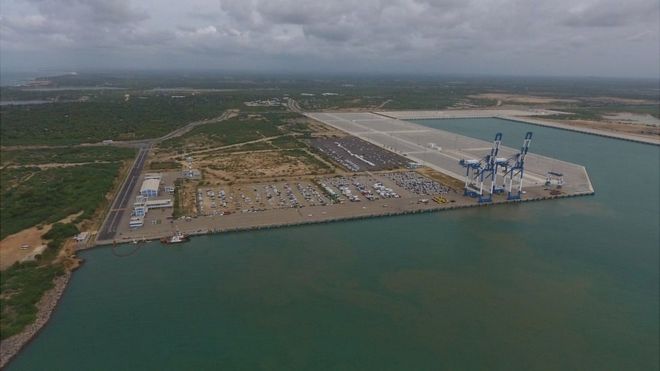
Hambantota port from above, Sri Lanka
As a result, the region is paying using their future money, to prop up a slowing Chinese economy, providing jobs for, otherwise, jobless Chinese workers, while all China did was to put the money from the left pocket to its right pocket, and suddenly the host countries now owe a debt to China – one that they usually can’t maintain; and viola, China bought a new precious piece of strategic real estate at zero cost.
Opinion | China’s debt traps around the world are a trademark of its imperialist ambitions
China angles to gain influence overseas by bankrupting its partners and bending them to its will.
But being self-sufficiency does not make a country richer or ensures good progress. Because we must understand value creation and how it is actually a zero-sum game. The amount of value does not change drastically, if all that value circulates only within the country.
ECONOMIC VALUES
?2″ alt=”Related image” />New values are created in the resources-creating industries like oil production, mining, and farming. This resource creation is the building block of the world economy. “Value-added” services like steel production, oil refining, manufacturing, transforms the low-value economic units, to more valuable economic units. And if your country can export more of these economic units overseas, in exchange for currency, or simply what we know as “money” – your country gets richer and the economy grows.
This is also partly the reason why, a purely self-sufficient country, cannot grow or progress much – because there will be a limited number of people/companies able to purchase the “value-added” economic units, while the rest of the population are involved with only low-value economic unit creations and low-level value-adding work. The lack of demand for high-value economic units would mean research and development will be limited, as low demand dictate cost to be high. And the higher the cost, the less likely most of the population can buy it. The amount of “wealth” would therefore largely remain more or less the same, or grows slowly in accordance with the population growth and raw resources generation.

 Chinese assembly lines.
Chinese assembly lines.
China imports newly created economic units (raw materials) from mining countries like Australia, or oil-producing country like Brunei, then through manufacturing, transforming them into higher value goods, and sold to the United States. In return for the Chinese goods, USA paid money to China, which enters the Chinese economy, allowing an increase in wealth for the Chinese people (via higher salary or dividends to business owners). The newly derived wealth will then get stuck within a closed economic system, where wealth circulates, but hardly able to get out.
If you understand what I wrote above, then we could understand China’s economic miracle was created at the expense of USA’s economic decline. Much of the wealth China have today, is siphoned from the United States over the past 2 decades.
USA primarily exports newly created economic units: like soybean, corn, copper, aluminum, electronic circuits to China. (China also imports luxury items, like civilian aircraft, cars, and large vehicles – source)
The total value of US export to China is only 130.37 billion dollars, out of a total of 1.547 trillion dollars of US exports. China only represents less than 8.5% of the total export from the USA. But total import from China into the USA is 505.6 billion – almost a third of the sum total export from the USA.
The USA had not been creating enough economic units to cover their spending on imports and had been printing money (spending future money; accumulating debt) to keep the cogs turning. The result is a 21.4 trillion US dollar debt in the USA and a 29 trillion total wealth in China.
 Detriot, United States
Detriot, United States
 Ghost town/city of Ordos, China
Ghost town/city of Ordos, China
As you can see, a ghost town in China looks way better than an inner state city in USA. Where do you think China get the money to build these ghost towns?
So this is a “good” system, China gets raw materials, immediately converting them into items that can be exchanged into cash – all at a profit; and immediately locking the money within the Chinese economy (remember I mentioned Chinese tendency to save?).
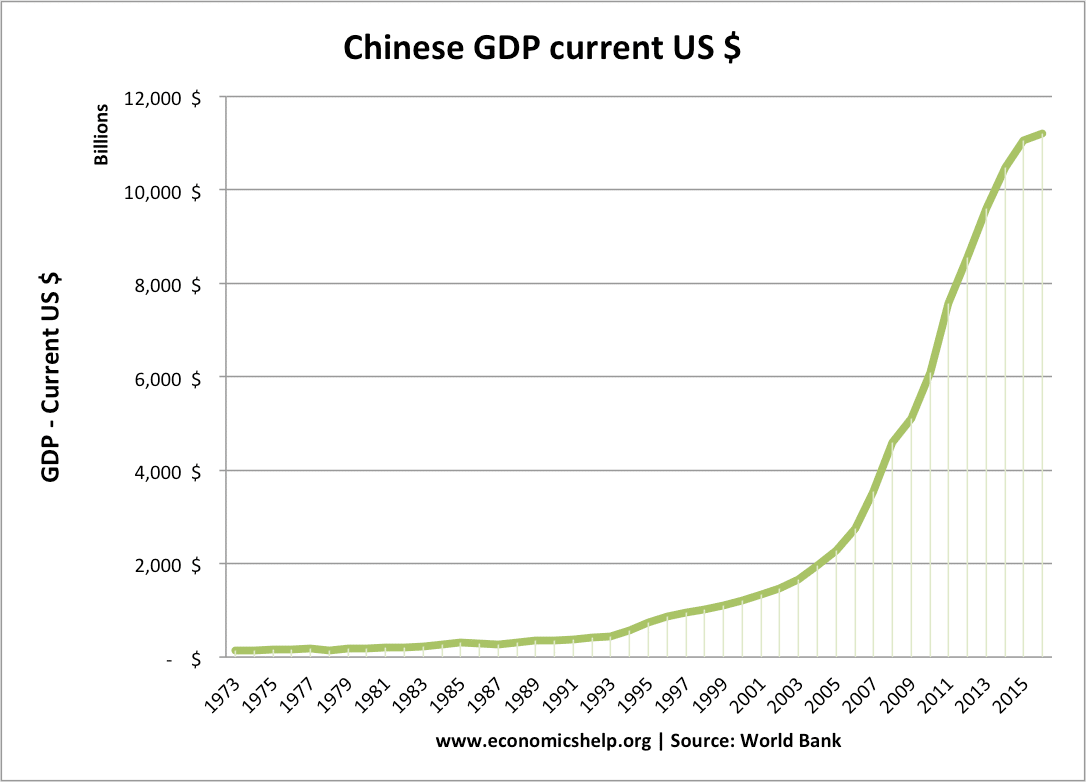
The 2 graphs look strangely similar… isn’t it?
And do this enough times/cycles, you get the economic miracle that China is today.
THE US MARKET
The United States offers the largest consumer market on earth with a GDP of $20 trillion and 325 million people. Household spending is the highest in the world, accounting for nearly a third of global household consumption.
This means that, to not get access to the US market, any companies producing goods for consumers will stand to lose 33% of their earnings (or potential earnings). And China, being the “factory of the world”, is poised not to be miss out on such a big market.
Trump understanding this reality, uses this as the bargaining chip against all his trading partners, as well as the corporations that had been actively offshoring their manufacturing. And against China, this is particularly useful.
/cdn.vox-cdn.com/uploads/chorus_image/image/60012443/AP_18160750063030.0.jpg)
“You don’t scare me Merkel. You can’t win.”
You see, if the access to the US market is not THAT important to China, China would not have made so much effort to negotiate with the Trump administration. But when you look at USA’s attitude towards China in the negotiations – it is easy to tell that China does not have a lot to offer to USA that would encourage USA not to raise the tariff.
Access to the Chinese market, reducing trade barriers, removing unfair practices like forced technology transfer, adherence to freedom of information, etc… all are what USA wants from China. But in Trump’s mind, these are just “what is fair” for China to do, and had not a lot to do with the tariff that Trump had put up against China. In my assessment, Trump had always planned to tariff China’s imports, regardless of what China does or say they will do.
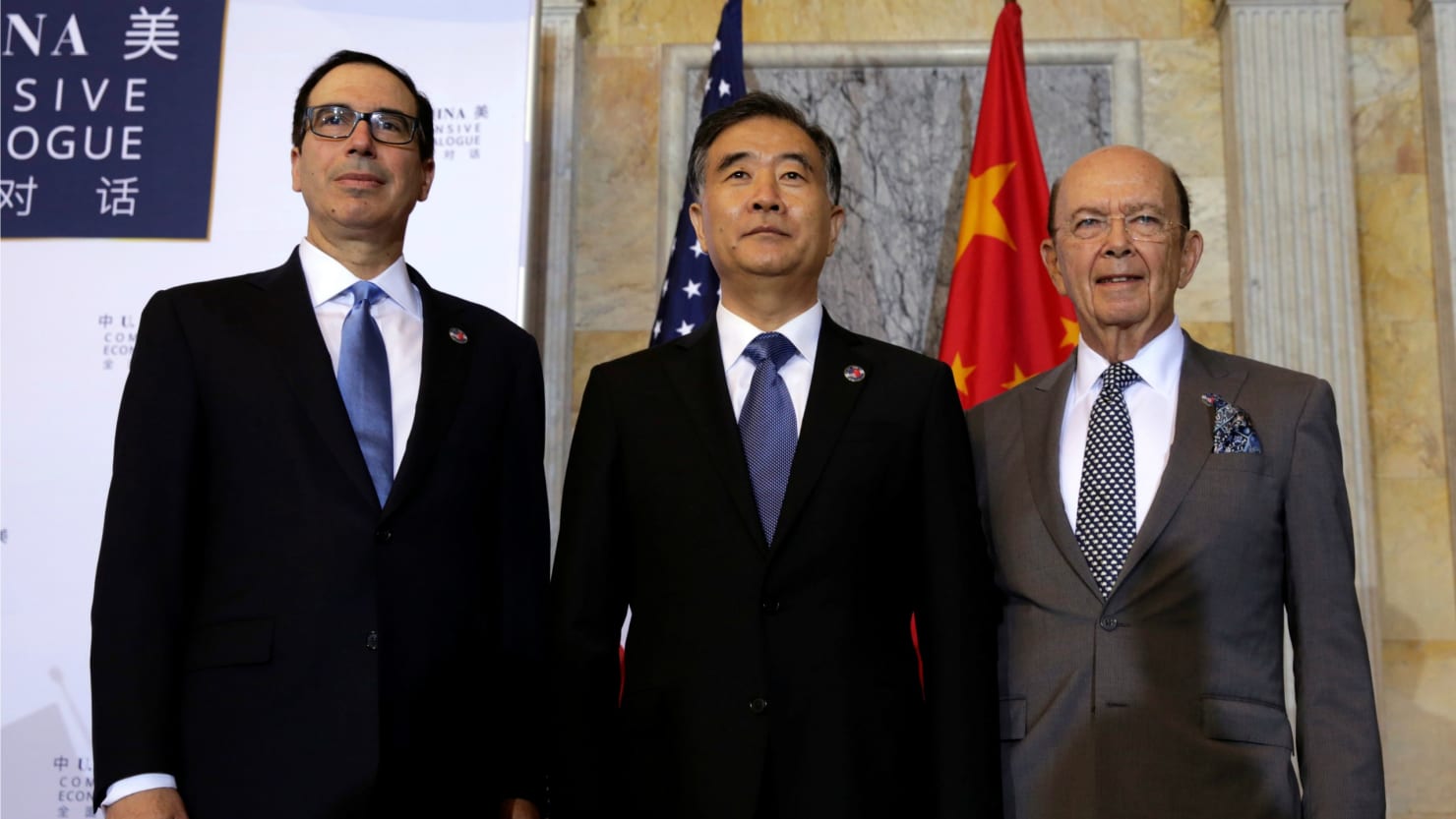
As a result, China is unable to give what Trump wants (the removal of trade barriers and adherence to proper trading norms which is against Chinese inclinations), at the same time, can do nothing to convince Trump not to tariff virtually all of the Chinese imports. Chinese tariffs on US goods also do not do as much damage to the USA than to their own businesses and economy – most Chinese imports have alternatives produced in other countries or locally within the United States.
This is just a “trade war” that China can’t win.
In fact, I do not even want to call this a trade war, because eventually, China will have to drop their own tariffs to a lower level, or even eliminate them, just so that they can get what they need and not kill their own Chinese businesses – while China’s access into the US market will continue to be 25% more expensive than it used to be.
A trade war would usually be a pretty equal fight, where the losses are inflicted on both sides (thus a lose-lose situation) – but in this case, the verdict is out even before the “war” started.
 “We are protectionist!”
“We are protectionist!”
China’s “Made in China 2025” declaration also gave US politicians from both sides of the political aisle good reasons to never let up on the tariffing, in order to slow down China’s growth and limit their ambition – all to ensure US hegemony and absolute economical-geopolitical-military advantage over China.
China also had not done themselves any favours, as their punitive actions against a number of neighbours/partners prior to Trump’s election as the US President, like South Korea, Taiwan, Singapore, Vietnam, Philippines, etc… had done nothing, but convinced the world that China is not going to rise peacefully and assume the role of a trustable “big brother” that everyone can lean against.

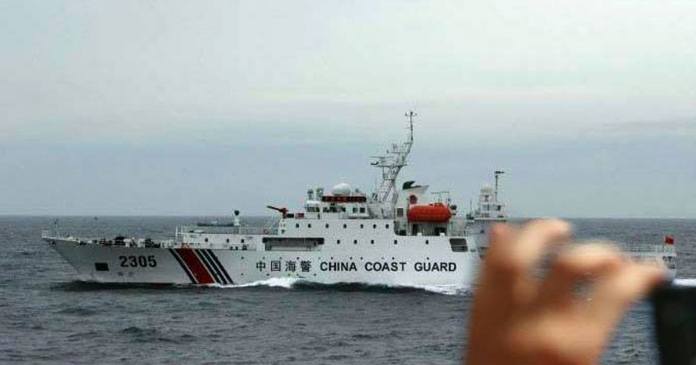
China coast guards aren’t really near their own coasts.
 South Korea’s Lotte suffered heavily under China’s friendliness and peace-love
South Korea’s Lotte suffered heavily under China’s friendliness and peace-love
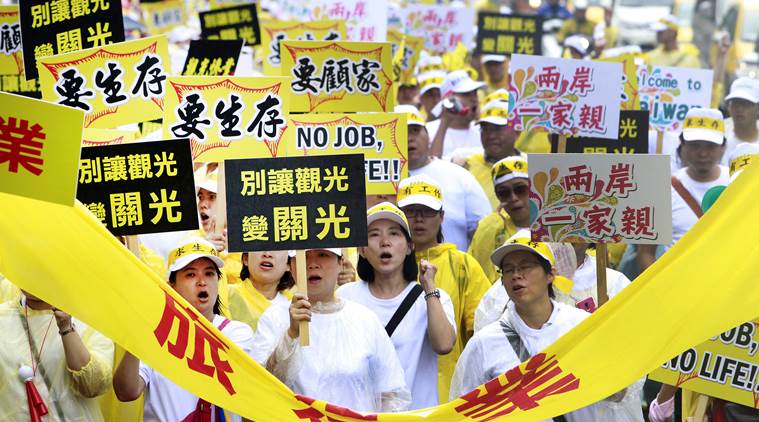 Protest over slump in China tourists visits in Taiwan, after China limits number of tourists to Taiwan
Protest over slump in China tourists visits in Taiwan, after China limits number of tourists to Taiwan
This bad taste felt by numerous countries lends forth to the consequence where few, if not, no countries are willing to stand on the side of China, just as China appeals to the world to stand together against America’s “trade bullyism practices“. As far as I can tell, no one, not even the Russians or the Iranians would want to partake in this trade dispute between the 2 biggest economies.
While the common saying over the past year is that, “when two elephants fight, it is the grass that gets trampled”, to describe how the trade war between China and USA will negatively affect the world. But somehow, the reality is pretty different. It seemed more like “when two elephants fight, do not get involved, just pick up the fruits that drop onto the ground from the trees that the elephants knock down”.
 Just ignore the stock photo advertisement – you get the gist
Just ignore the stock photo advertisement – you get the gist
All the doom and gloom exclaimed by China, global growth is still projected by IMF to reach 3.9 percent in 2018 and 2019. What trade war you may ask.
Cover Photo Source: https://www.factsthatmakeyousmarter.com/2018/07/us-win-trade-war/
Also Read:

